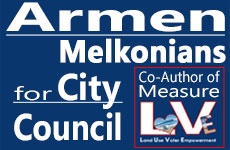| Roque & Mark Real Estate 2802 Santa Monica Boulevard Santa Monica, CA 90404 (310)828-7525 - roque-mark.com |
By Niki Cervantes
Staff Writer
October 27, 2016 -- Still scrambling for financing, Santa Monica has fallen far short for the second year in a row of meeting the voter-imposed minimum for building new affordable housing, according to a new City report.
Only 19 percent of the 175 multi-family units finished in the 2015-2016 fiscal year were designated as “affordable,” or just 34 units, a September 15 report by City Housing Manager Barbara Collins said.
Proposition R, passed by city voters in 1990, requires 30 percent all multifamily housing completed in each fiscal year be affordable to low-and moderate-income households, and that at least half of affordable housing be reserved just for low-income households.
But the City failed the mandate every step of the way in 2015-2016, the report showed.
Another 126 multi-family units were still in construction when the fiscal year ended on June 30, but only 15 were earmarked as affordable, or 12 percent, the report found.
Planning approval had been secured for another 680 units, but only 225 affordable units were included, or 23 percent, Collins found.
In all, 981 units were either built, in the process of construction or had been granted building permits; of these 225 were in the affordable category, or 23 percent.
As they did in the last fiscal year, City officials blamed the shortfall on the 2012 elimination of state redevelopment agencies, a major funding source for low-income housing construction for local governments throughout California.
Santa Monica had been relying on about $16 annually in redevelopment funds to finance affordable housing construction, City officials say ("Where Santa Monica's RDA Money Goes," February 23, 2012).
Hunting for new funding, the City is pushing two proposed measures on the November 8 ballot ("Opponents Call Santa Monica Tax Measure "Growth Stimulating Hormone," Supporters Disagree, August 24, 2016).
Measure GSH proposes a half-cent City sales tax, and Measure GS, an accompanying proposal recommends the tax revenue -– estimated at $16 million annually -- be split evenly on the City’s affordable housing program and the Santa Monica-Malibu Unified School District.
If both measures pass, Santa Monica’s sales tax rate would rise to 10.5 percent, tied for the highest in California.
Failing to meet the mandate of Proposition R does not result in penalties or other sanctions. The law say that if the City violates the quota, the City Council “shall take such action as is necessary to ensure that the provisions will be met in the future.”
Last fiscal year was even worse than 2015-2016 for Prop R housing.
Of the 522 multi-family units completed, under construction or granted building permits, only 86 were considered affordable, or 16 percent, a final report for the 2104-2015 fiscal year found.
The report notes that meeting Prop R’s dictates has been tough for Santa Monica.
In 22 years, the City has met the 30 percent minimum benchmark only half of the time, including eight times when it was successful because it contributed city funding, Collins said.
The City began to regularly fall short of the minimum when the state abolished its redevelopment agency, which was established in 1994 after the Northridge earthquake battered the city ("Santa Monica Falls Short of Affordable Housing Mandate," June 12, 2012).
Cumulatively, the City does meet the minimum, the report said. Since 1994-1995, a total of 5,084 multi-family units were built, of which 1,951 –- 38 percent -– were affordable. And of that total, 25 percent were units for “very low income” to “low income” earners, the report said.
Included in the annual report to the City Council was an update on Proposition I, passed by city voters in 1998. The law authorizes the City to build affordable units equal to one-half of one percent of the total number of residences in Santa Monica that existed on the last day of the prior fiscal year, generally.
Collins said the City was involved in building 1,045 affordable apartments.




